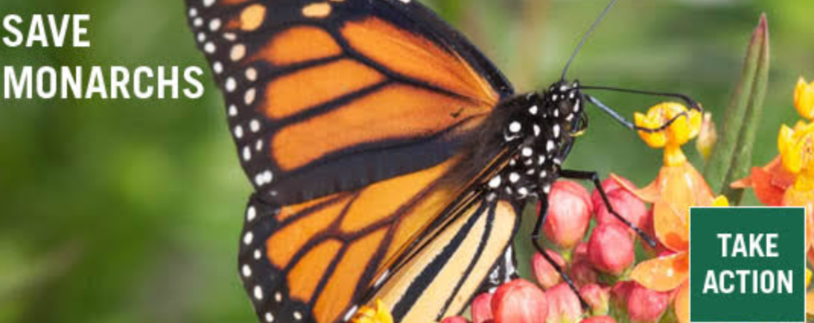Saving Our Smallest Allies: Combating the Global Decline of Insects
In recent years, scientists and environmentalists have raised the alarm about a crisis unfolding quietly beneath our feet: the rapid decline of insect populations worldwide. These tiny creatures, often overlooked or maligned, play crucial roles in ecosystems and human survival. Understanding their importance and taking steps to protect them is essential for maintaining biodiversity and ecological balance.
The Importance of Insects
Insects are integral to many processes that sustain life on Earth. Here are a few key roles they play:
1. Pollination: Bees, butterflies, and other pollinators are responsible for the reproduction of about 75% of flowering plants, including many crops that humans rely on for food. Without them, global food production would be severely impacted.
2. Decomposition and Soil Health: Insects like beetles, ants, and worms break down organic matter, recycling nutrients back into the soil. This process enriches the soil and supports plant growth, which in turn supports entire ecosystems.
3. Food Web Dynamics: Insects are a primary food source for many birds, amphibians, reptiles, and mammals. Their decline can lead to cascading effects throughout the food web, affecting numerous species and leading to further ecological imbalance.
4. Pest Control: Predatory insects, such as ladybugs and certain wasps, help control populations of agricultural pests, reducing the need for chemical pesticides and promoting healthier crops.
The Causes of Decline
The factors contributing to the decline of insects are varied and often interlinked:
1. Habitat Loss: Urbanization, deforestation, and agricultural expansion have led to the destruction of natural habitats. Insects lose their homes and food sources, making survival difficult.
2. Pesticides: The widespread use of pesticides in agriculture can be deadly to insects, not only targeting pests but also beneficial species. Neonicotinoids, in particular, have been implicated in the decline of bee populations.
3. Climate Change: Rising temperatures and changing weather patterns disrupt the life cycles of insects, affecting their development, reproduction, and migration. Extreme weather events can also destroy habitats and food sources.
4. Pollution: Air and water pollution, including heavy metals and plastic waste, can poison insects directly or degrade the environments they depend on.
5. Invasive Species: Non-native species can outcompete, prey upon, or introduce diseases to native insect populations, further driving declines.
How We Can Help
Addressing the decline of insects requires concerted effort at multiple levels, from individual actions to global policies. Here are some ways we can help:
1. Promote Habitat Conservation: Protecting and restoring natural habitats is crucial. This can be achieved through the creation of nature reserves, reforestation projects, and urban green spaces like parks and community gardens.
2. Reduce Pesticide Use: Shifting towards organic and sustainable farming practices can significantly reduce the reliance on harmful pesticides. Integrated Pest Management (IPM) strategies, which combine biological control, habitat manipulation, and other eco-friendly practices, offer effective alternatives.
3. Support Pollinator-Friendly Practices: Planting native flowering plants and creating pollinator gardens can provide food and shelter for bees, butterflies, and other pollinators. Avoiding the use of chemical pesticides in these areas is crucial.
4. Encourage Citizen Science: Engaging the public in citizen science projects can help monitor insect populations and contribute valuable data to scientific research. Initiatives like the Great Sunflower Project and Butterfly Count allow individuals to participate in conservation efforts.
5. Advocate for Policy Changes: Supporting policies and regulations that protect insect habitats, regulate pesticide use, and address climate change is essential. Advocacy can take the form of contacting local representatives, supporting environmental organizations, and raising public awareness.
6. Educate and Raise Awareness: Public education about the importance of insects and the threats they face can foster a culture of conservation. Schools, community groups, and media campaigns can play a significant role in spreading this knowledge.
7. Support Sustainable Practices: Choosing sustainably produced products and supporting businesses that prioritize environmental stewardship can drive demand for eco-friendly practices. This includes buying organic produce, supporting local farmers, and reducing our carbon footprint.
Success Stories and Ongoing Efforts
Despite the challenges, there are positive examples of successful insect conservation efforts:
1. Bumblebee Reintroduction Projects: In parts of the UK, conservationists have successfully reintroduced native bumblebee species to areas where they had gone extinct. These projects involve habitat restoration, monitoring, and community engagement to ensure the bees' survival and proliferation.
2. Monarch Butterfly Conservation: In North America, efforts to conserve the monarch butterfly include planting milkweed (the caterpillar's only food source) and protecting migratory routes. Public awareness campaigns and citizen science projects have also contributed to monitoring and supporting their populations.
3. Urban Beekeeping: Cities around the world have seen a rise in urban beekeeping, which helps support bee populations and educates the public about the importance of pollinators. Urban gardens and rooftops provide new habitats for bees, contributing to their conservation.
Conclusion
The decline of insect populations is a global issue that requires immediate attention and action. By understanding the critical roles insects play, addressing the causes of their decline, and taking concrete steps to protect them, we can help ensure that these vital creatures continue to thrive. Whether through individual actions, community involvement, or policy advocacy, each of us can contribute to the conservation of insects and the health of our planet. Together, we can make a difference and secure a future where insects, and the ecosystems they support, flourish.

